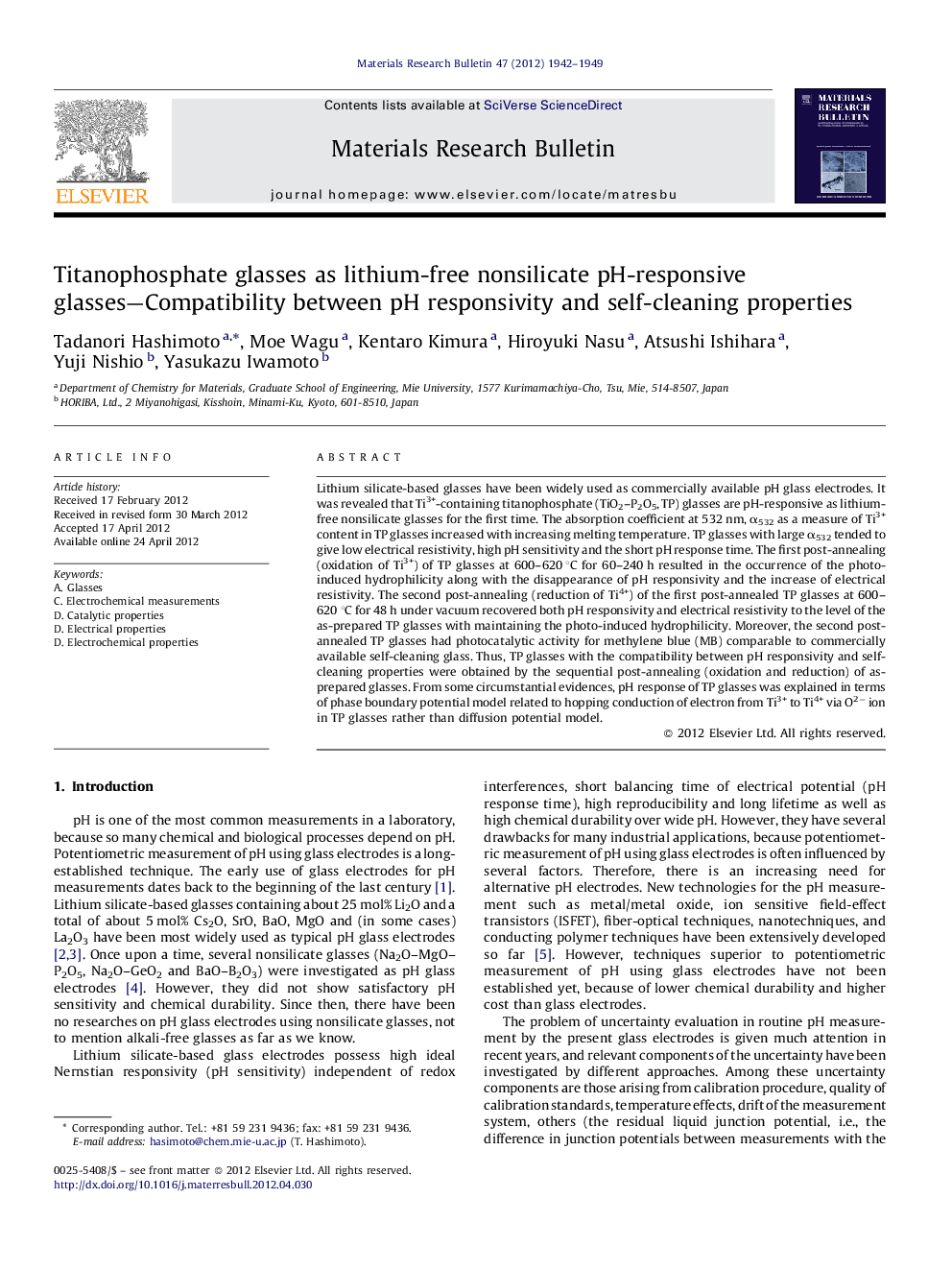| کد مقاله | کد نشریه | سال انتشار | مقاله انگلیسی | نسخه تمام متن |
|---|---|---|---|---|
| 1489967 | 992315 | 2012 | 8 صفحه PDF | دانلود رایگان |

Lithium silicate-based glasses have been widely used as commercially available pH glass electrodes. It was revealed that Ti3+-containing titanophosphate (TiO2–P2O5, TP) glasses are pH-responsive as lithium-free nonsilicate glasses for the first time. The absorption coefficient at 532 nm, α532 as a measure of Ti3+ content in TP glasses increased with increasing melting temperature. TP glasses with large α532 tended to give low electrical resistivity, high pH sensitivity and the short pH response time. The first post-annealing (oxidation of Ti3+) of TP glasses at 600–620 °C for 60–240 h resulted in the occurrence of the photo-induced hydrophilicity along with the disappearance of pH responsivity and the increase of electrical resistivity. The second post-annealing (reduction of Ti4+) of the first post-annealed TP glasses at 600–620 °C for 48 h under vacuum recovered both pH responsivity and electrical resistivity to the level of the as-prepared TP glasses with maintaining the photo-induced hydrophilicity. Moreover, the second post-annealed TP glasses had photocatalytic activity for methylene blue (MB) comparable to commercially available self-cleaning glass. Thus, TP glasses with the compatibility between pH responsivity and self-cleaning properties were obtained by the sequential post-annealing (oxidation and reduction) of as-prepared glasses. From some circumstantial evidences, pH response of TP glasses was explained in terms of phase boundary potential model related to hopping conduction of electron from Ti3+ to Ti4+ via O2− ion in TP glasses rather than diffusion potential model.
Figure optionsDownload as PowerPoint slideHighlights
► Ti3+-containing TP glasses are lithium-free nonsilicate pH-responsive ones.
► TP glasses with a large amount of Ti3+ ions show good pH responsivity.
► TP glasses with pH responsivity and self-cleaning properties are obtained.
► pH response of TP glasses is explained by phase boundary potential model.
Journal: Materials Research Bulletin - Volume 47, Issue 8, August 2012, Pages 1942–1949